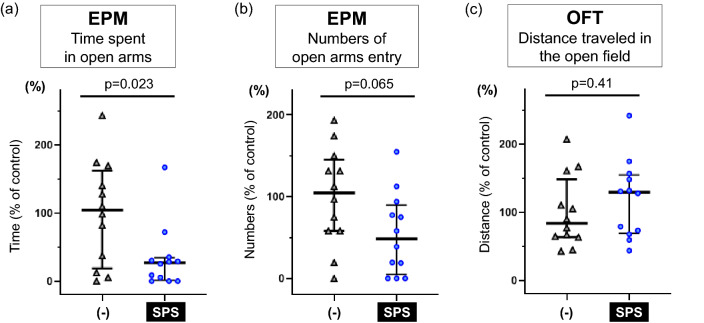Figure 2.
SPS induces anxiety-like behavior in the EPM. (a) Time spent in the open arms of the EPM is shown. Exposure to SPS significantly reduced time spent in the open arms (median [IQR]; non SPS: 104.2 [31.1–147.5], SPS: 26.9 [4.0–31.5], Mann–Whitney’s U-test; W = 111, p = 0.023). (b) Number of open-arm entries in the EPM are shown. SPS tended to decrease the number of open-arm entries (median [IQR]; non SPS: 104.7 [58.1–136.0], SPS: 48.4 [14.1–81.5], Mann–Whitney’s U-test; W = 104, p = 0.065). (c) Distance travelled in the OFT is shown. Exposure to SPS did not change distance travelled (median [IQR]; non SPS: 83.6 [64.1–122.9], SPS: 129.2 [71.8–150.2], Mann–Whitney’s U-test; W = 57, p = 0.41). Data are shown using % of controls. Reference control is the (-) group. Data are presented as scatter plots including median and interquartile range. Mann–Whitney’s U-test was performed to compare two groups. n = 12/group. (-): non-SPS group, EPM: elevated plus maze test, OFT: open field test, SPS: single prolonged stress.

